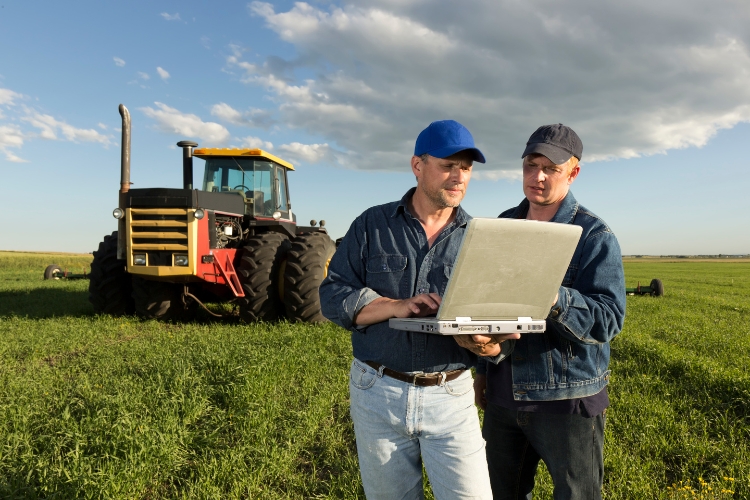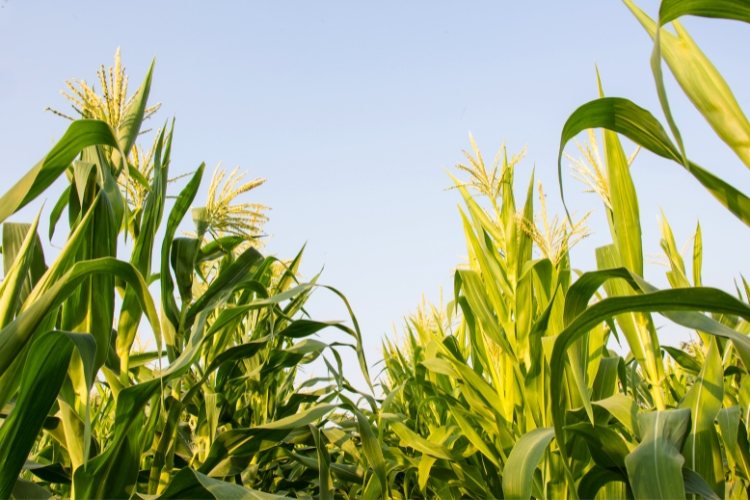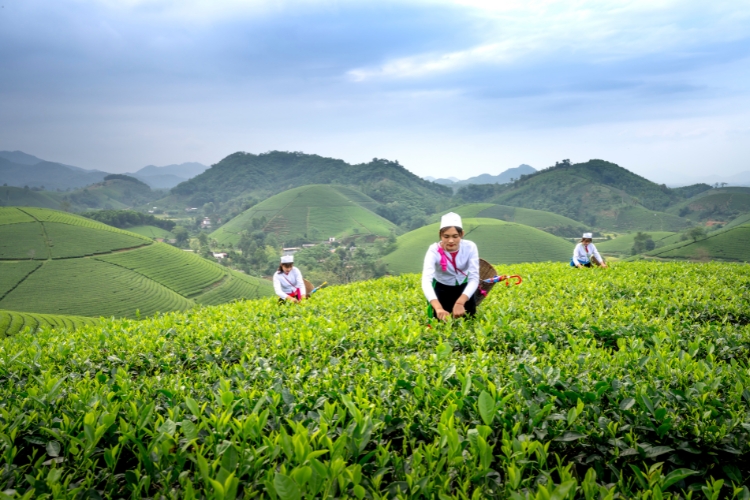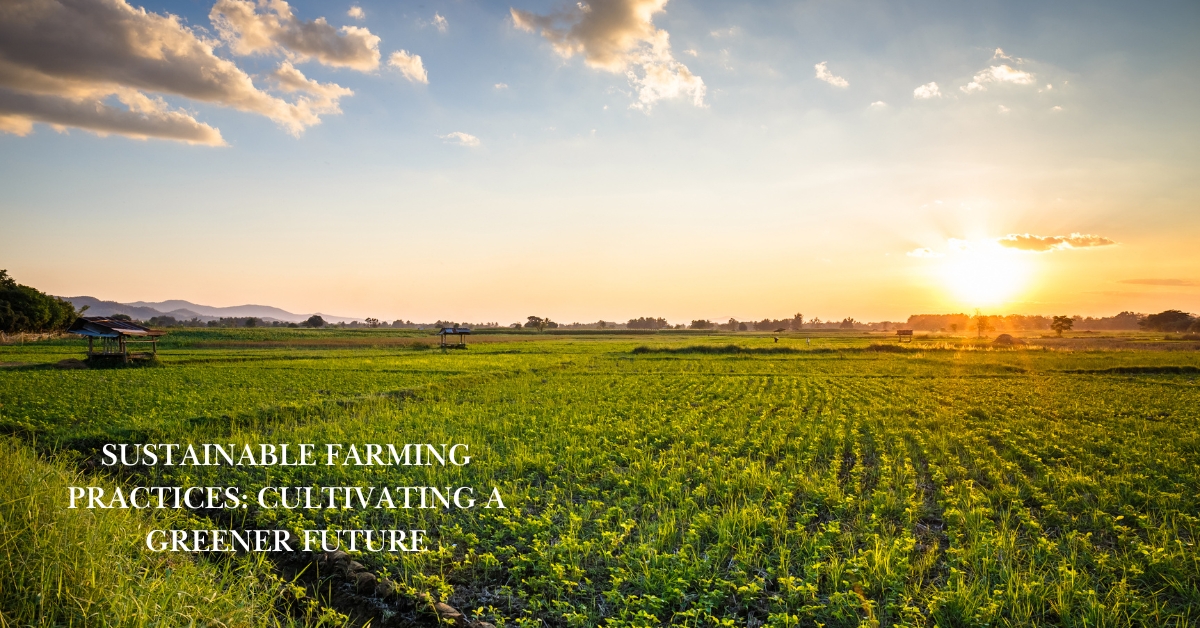As the global population continues to grow, the need for a sustainable and eco-friendly approach to agriculture has never been more pressing.
Traditional farming methods have often come at a cost to the environment, depleting natural resources and contributing to climate change.
However, a growing movement towards sustainable farming practices offers hope for a more harmonious relationship between human activity and the natural world.
Key Takeaways:
- Sustainable farming is a holistic approach that prioritizes environmental conservation, social responsibility, and economic viability.
- Key sustainable farming practices include organic farming, agroforestry, regenerative agriculture, integrated pest management, and precision agriculture.
- Sustainable farming offers numerous environmental benefits, such as improved soil health, enhanced biodiversity, and climate change mitigation.
- Sustainable farming also provides social benefits, including improved food security, better farmer livelihoods, and positive impacts on public health.
- Economic benefits of sustainable farming include cost savings, new market opportunities, and increased resilience to the impacts of climate change.
- Challenges and considerations include upfront costs, the need to develop new knowledge and skills, a complex regulatory environment, access to markets, and scalability.
- Embracing sustainable farming practices is crucial to address the pressing challenges of climate change, resource depletion, and environmental degradation, and to work towards a more harmonious relationship between agriculture and the natural world.

Understanding Sustainable Farming
Sustainable farming is a holistic approach to agriculture that aims to meet the food and fiber needs of the present without compromising the ability of future generations to meet their own needs. This involves a range of practices that prioritize environmental conservation, social responsibility, and economic viability.
1. Key Principles of Sustainable Farming
- Soil Health: Maintaining and improving the fertility and structure of the soil through techniques like crop rotation, cover cropping, and reduced tillage.
- Water Conservation: Implementing efficient irrigation systems, minimizing water waste, and protecting water sources from contamination.
- Biodiversity Preservation: Creating diverse habitats that support a wide range of plant and animal species, and reducing the use of synthetic pesticides and fertilizers.
- Renewable Energy: Adopting renewable energy sources, such as solar, wind, or biofuels, to power farm operations and reduce greenhouse gas emissions.
- Community Engagement: Fostering strong connections with local communities, supporting fair labor practices, and ensuring the social and economic well-being of farmers and farm workers.

Sustainable Farming Practices in Action
1. Organic Farming
Organic farming is a sustainable approach that avoids the use of synthetic fertilizers, pesticides, and other chemicals. Instead, organic farmers rely on natural methods to maintain soil fertility and control pests and weeds. This includes the use of compost, cover crops, and beneficial insects.
2. Agroforestry
Agroforestry is the integration of trees and shrubs into agricultural systems. This practice can provide numerous benefits, such as improved soil fertility, better water management, and increased biodiversity. Agroforestry systems can include practices like alley cropping, silvopasture, and forest farming.
3. Regenerative Agriculture
Regenerative agriculture is a farming approach that focuses on rebuilding and restoring soil health. This involves minimizing soil disturbance, increasing plant diversity, and integrating livestock into the system. The goal is to create a self-sustaining, resilient ecosystem that can produce food while also sequestering carbon and improving overall ecosystem function.
4. Integrated Pest Management (IPM)
Integrated Pest Management (IPM) is a holistic approach to pest control that combines various methods, including biological, cultural, mechanical, and limited use of targeted pesticides. IPM aims to minimize the negative impact on the environment and human health while still effectively managing pests.
5. Precision Agriculture
Precision agriculture is the use of technology, such as GPS, sensors, and data analytics, to optimize the use of inputs (e.g., water, fertilizers, and pesticides) and improve the overall efficiency of farming operations. This can lead to reduced resource consumption, lower production costs, and decreased environmental impact.

Benefits of Sustainable Farming
1. Environmental Benefits
- Soil Health: Sustainable farming practices can improve soil fertility, structure, and water-holding capacity, reducing the need for synthetic inputs and enhancing the long-term productivity of the land.
- Biodiversity: Sustainable farming supports the conservation of natural habitats, providing a haven for a wide range of plant and animal species, including pollinators and beneficial insects.
- Climate Change Mitigation: Many sustainable farming practices, such as carbon sequestration in the soil and the use of renewable energy, can help to mitigate the effects of climate change.
2. Social Benefits
- Food Security: Sustainable farming systems can provide a reliable and diverse supply of nutritious food, improving food security and supporting local communities.
- Farmer Livelihoods: Sustainable farming often involves a greater focus on fair labor practices, community engagement, and the overall well-being of farmers and farm workers.
- Public Health: Reducing the use of synthetic pesticides and fertilizers can have positive impacts on human health, both for farm workers and consumers.
3. Economic Benefits
- Cost Savings: Sustainable farming practices can lead to reduced input costs, such as for fertilizers, pesticides, and energy, ultimately improving the profitability of farming operations.
- Market Opportunities: Consumers are increasingly seeking out sustainably produced food, creating new market opportunities for farmers who adopt sustainable practices.
- Resilience: Sustainable farming systems can be more resilient to the impacts of climate change, such as extreme weather events and changing weather patterns, helping to ensure the long-term viability of agricultural enterprises.

Challenges and Considerations
While the benefits of sustainable farming are clear, some challenges and considerations must be addressed:
- Upfront Costs: Transitioning to sustainable farming practices can require significant upfront investments in new equipment, infrastructure, and training, which can be a barrier for some farmers.
- Knowledge and Skill Development: Sustainable farming often requires a different set of skills and knowledge compared to conventional farming, and farmers may need to invest time and resources in education and training.
- Regulatory Environment: The regulatory landscape for sustainable farming practices can be complex, and policies and incentives may vary across different regions and jurisdictions.
- Market Access: Consumers may be willing to pay a premium for sustainably produced food, but building these markets and supply chains can be a challenge for some farmers.
- Scalability: While sustainable farming practices can be highly effective on a smaller scale, scaling up these methods to meet the needs of a growing global population may present additional challenges.
Conclusion: Embracing Sustainable Farming
As the world faces the pressing challenges of climate change, resource depletion, and environmental degradation, the need for a fundamental shift in our agricultural practices has never been more urgent. Sustainable farming offers a holistic solution that can help to address these issues while also providing economic and social benefits.
By embracing sustainable farming practices, we can work towards a future where agriculture and the natural environment coexist in harmony, providing abundant, nutritious food for all while also preserving the health of our planet. This will require a collaborative effort involving farmers, policymakers, researchers, and consumers, but the potential rewards are immense.
Table: Comparison of Sustainable Farming Practices
| Practice | Key Characteristics | Environmental Benefits | Social Benefits | Economic Benefits |
|---|---|---|---|---|
| Organic Farming | Avoidance of synthetic chemicals, reliance on natural methods for soil fertility and pest control | Improved soil health, reduced pollution, enhanced biodiversity | Reduced exposure to harmful chemicals, support for local food systems | Potential for price premiums, reduced input costs |
| Agroforestry | Integration of trees and shrubs into agricultural systems | Improved soil fertility, better water management, increased carbon sequestration | Diversified income streams, enhanced food security | Increased long-term productivity, reduced risk of crop failure |
| Regenerative Agriculture | Focus on rebuilding soil health through reduced tillage, increased plant diversity, and livestock integration | Carbon sequestration, improved water retention, enhanced ecosystem function | Improved farmer well-being, support for local food systems | Increased long-term resilience, reduced input costs |
| Integrated Pest Management (IPM) | Holistic approach to pest control using a combination of biological, cultural, mechanical, and limited chemical methods | Reduced environmental contamination, protection of beneficial organisms | Improved public health, reduced exposure to harmful chemicals | Potential for reduced input costs, increased crop yields |
| Precision Agriculture | Use of technology, such as GPS, sensors, and data analytics, to optimize input use and improve efficiency | Reduced resource consumption, decreased environmental impact | Improved working conditions, support for data-driven decision-making | Increased cost savings, enhanced productivity |
FAQs
What is Sustainable Farming, and How Does it Differ from Conventional Agriculture?
Sustainable farming is a holistic approach to agriculture that aims to meet the food and fiber needs of the present without compromising the ability of future generations to meet their own needs. It focuses on practices that prioritize environmental conservation, social responsibility, and economic viability, in contrast to conventional agriculture, which has often relied on resource-intensive and environmentally damaging methods.
What are the Main Benefits of Sustainable Farming Practices?
Sustainable farming offers a range of benefits, including improved soil health, enhanced biodiversity, climate change mitigation, better food security, improved farmer livelihoods, and positive impacts on public health. It can also lead to cost savings, new market opportunities, and increased resilience to the effects of climate change.
What are the Challenges Involved in Transitioning to Sustainable Farming?
Some key challenges in transitioning to sustainable farming include the upfront costs of adopting new practices and technologies, the need for developing new knowledge and skills, navigating a complex regulatory environment, accessing suitable markets, and scaling up sustainable methods to meet growing global demand.
How Can Consumers Support Sustainable Farming Practices?
Consumers can support sustainable farming by seeking out and purchasing sustainably produced food, advocating for policies and regulations that promote sustainable agriculture, and educating themselves about its benefits. By doing so, consumers can play a crucial role in driving the transition towards a more environmentally friendly and socially responsible food system.

